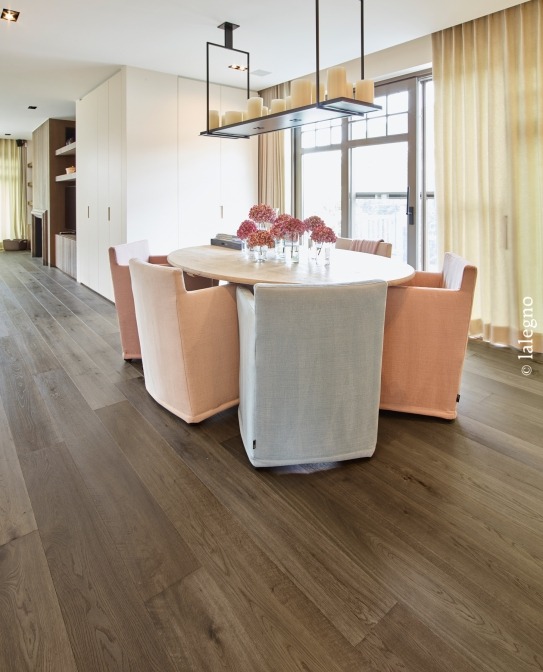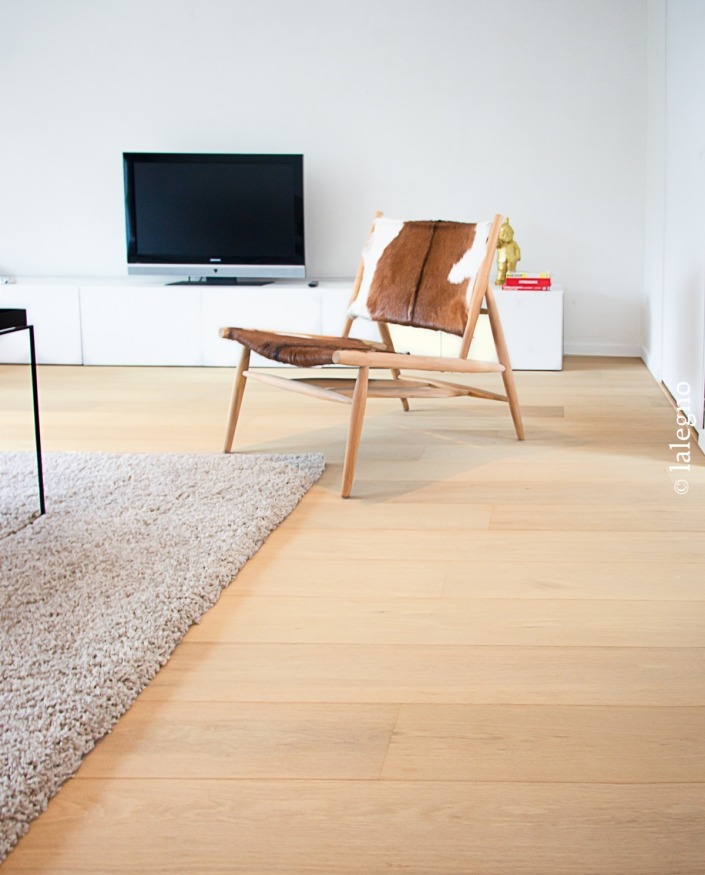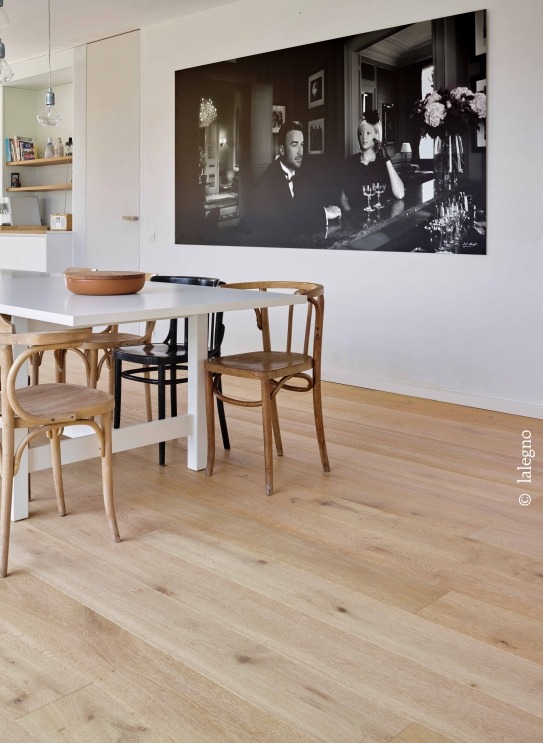

Wooden flooring and underfloor heating
— a perfect match
You want to live in style and comfort. Then both underfloor heating and a beautiful wooden floor are a logical choice. Did you know that, with Lalegno multilayered wooden flooring, you can combine the two perfectly? That way, you can enjoy your cosy home to the fullest.

The correct heating protocol
Did you follow all the guidelines and have you installed the wooden floor? Then it is important to start up the heating system correctly. First check if the screed is sufficiently dry (at the earliest 3 days after installation). Then let the water temperature increase by 5 °C per day, until it reaches 45 °C, or until the screed has reached a surface temperature of 28 °C. Do you switch off the installation? Then follow the procedure in reverse order.
Also avoid large temperature fluctuations, as they can cause cracking. This is why it is not recommended to turn the thermostat low in the evening and high again in the morning for underfloor heating with a parquet floor.
Important: if there is damage to your floor due to inadequate adherence to the heating protocol, your warranty will be void.








